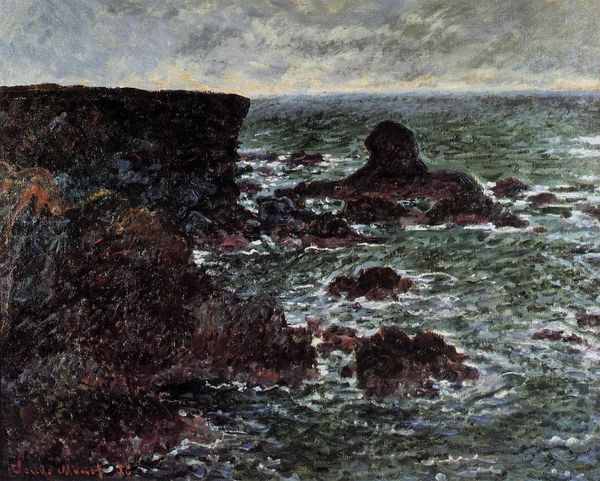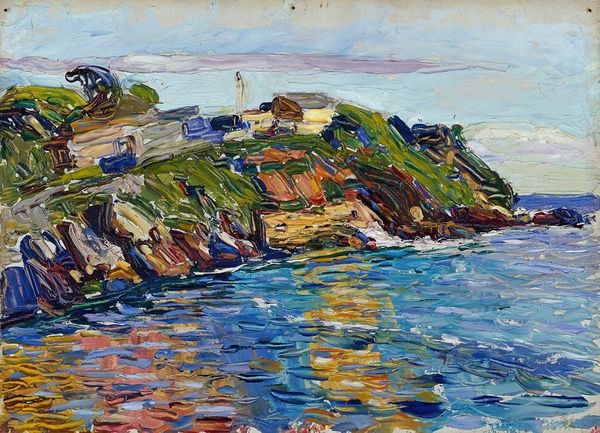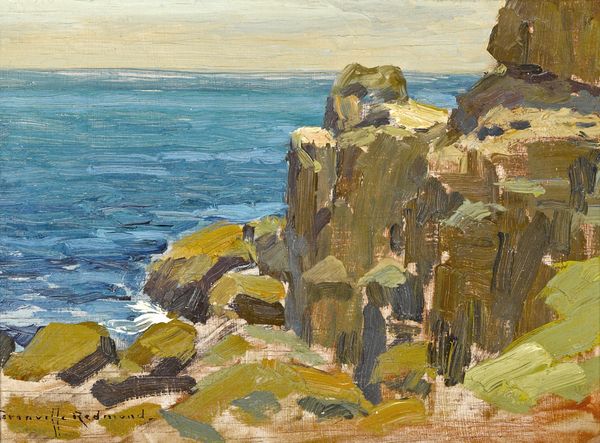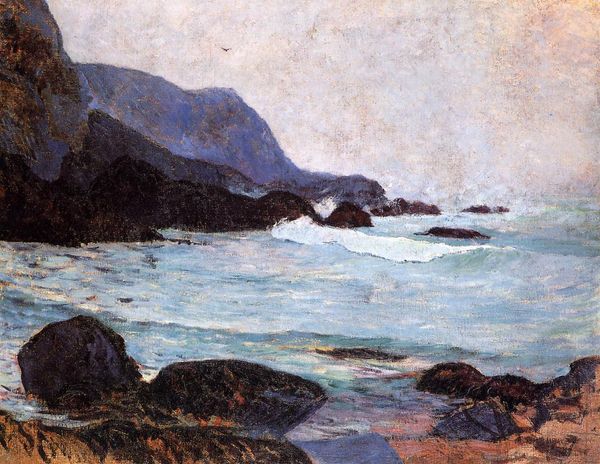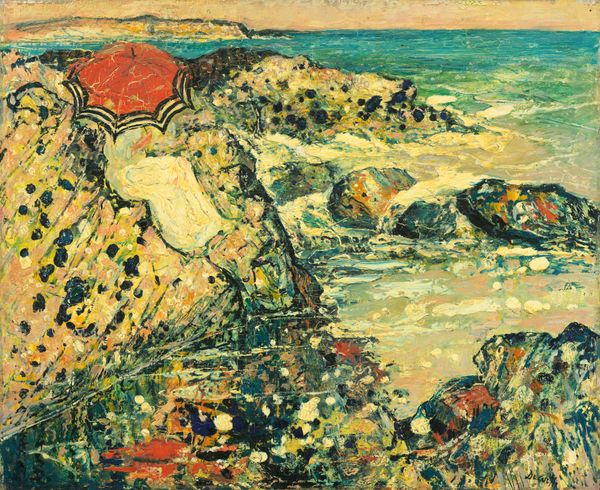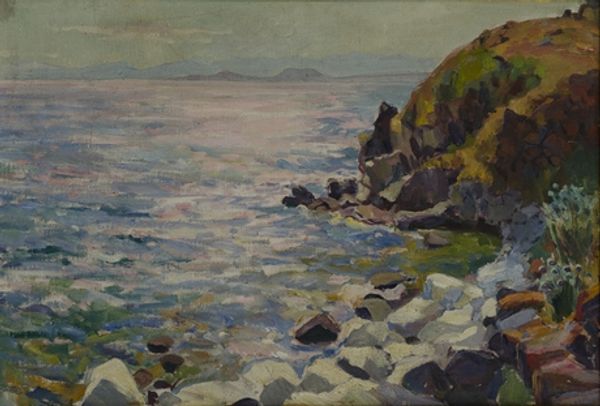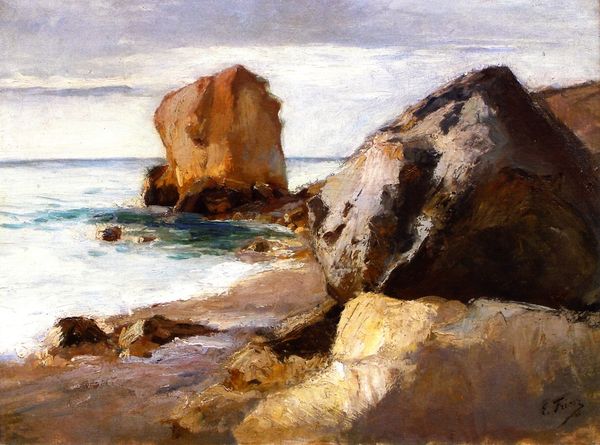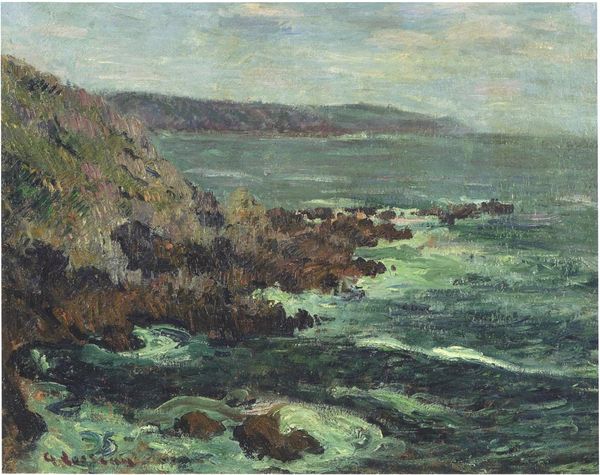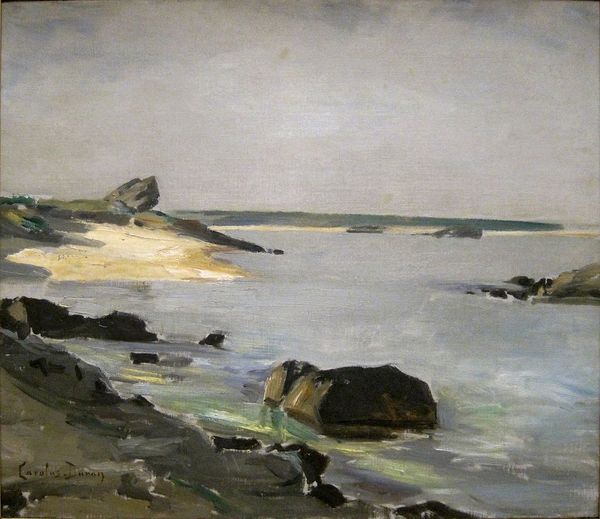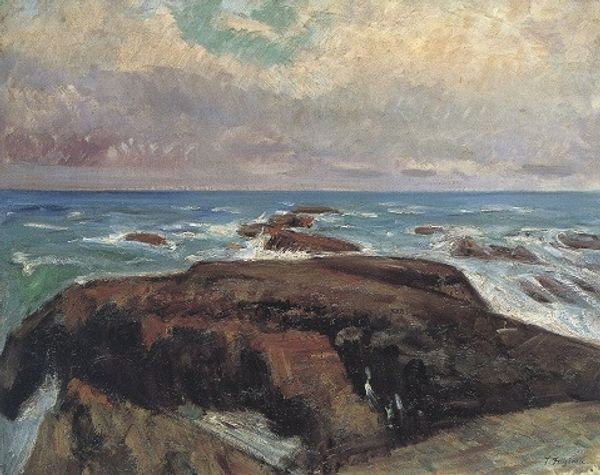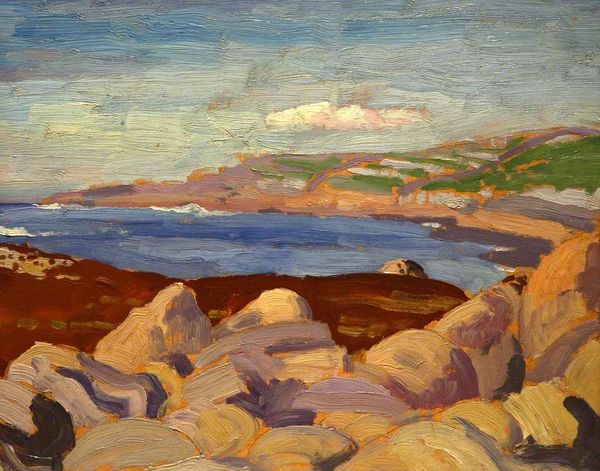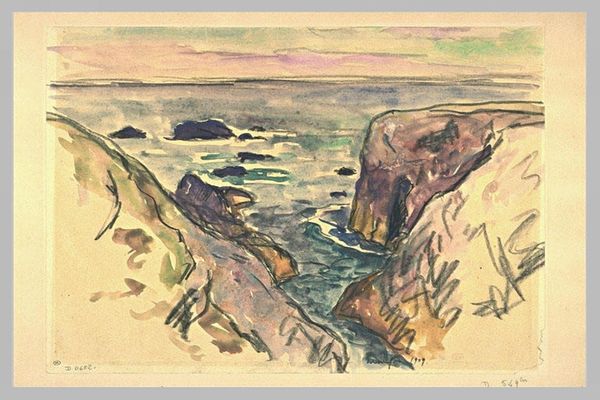
Copyright: Public Domain: Artvee
Editor: We're looking at Wassily Kandinsky's "Sestri — on the Beach" from 1905, done with oil paints, probably outdoors. It's a rocky shore, moody and almost pre-storm. The brushstrokes are very present. What do you make of this piece, especially considering the historical context for his work? Curator: It’s interesting to view this particular piece as a record of Kandinsky's transition. Consider the societal expectation for artists at the time – landscape painting, often "en plein air," was quite conventional. This painting engages with those conventions. However, the way he is disrupting those expectations is crucial. Note how the rocks and cliffs are more than just objects, they're almost pulsating with a nascent, internal energy. Editor: I see that. It's not just a literal depiction, but what do you think encouraged his shift from the fairly representational style here, toward the abstract works he became known for? Curator: That's a key question. One element is likely the increasing presence of photography, which displaced painting’s documentary function. There's also the rise of the spiritual in art, and anxieties around modernity and materialism. Kandinsky's evolving engagement with the art world—galleries, exhibitions, the social dynamics among artists—he eventually sought a deeper, more personally resonant mode of expression, moving beyond mere representation. Are you detecting hints of what’s to come? Editor: Now that you point it out, the color choices almost seem like they’re pushing beyond what’s realistic, becoming expressive in themselves. Curator: Exactly. It serves as a critical document showing Kandinsky negotiating the public expectations of art and forging his own artistic path in the face of societal and artistic changes. He doesn’t jettison tradition completely, but refashions it to express new sensibilities. Editor: I hadn’t thought of it in terms of negotiating the art world’s expectations. This gives me a richer appreciation for his later abstractions! Curator: Indeed. Looking at the historical context shapes our viewing experience. It makes you wonder: How does any artwork navigate social expectations and then pave its way forward?
Comments
No comments
Be the first to comment and join the conversation on the ultimate creative platform.
